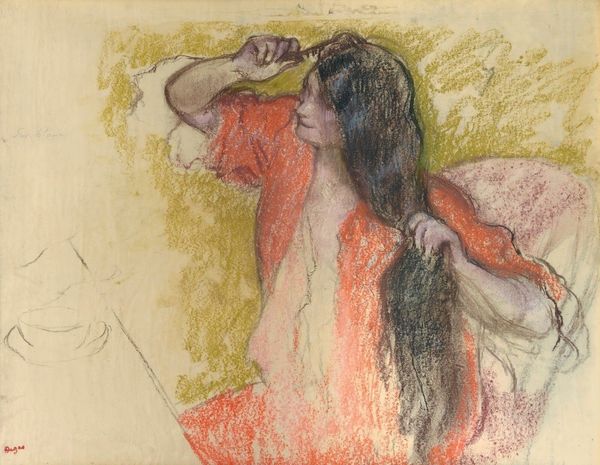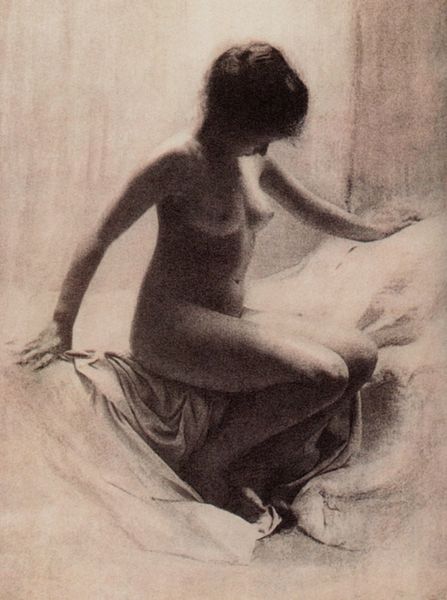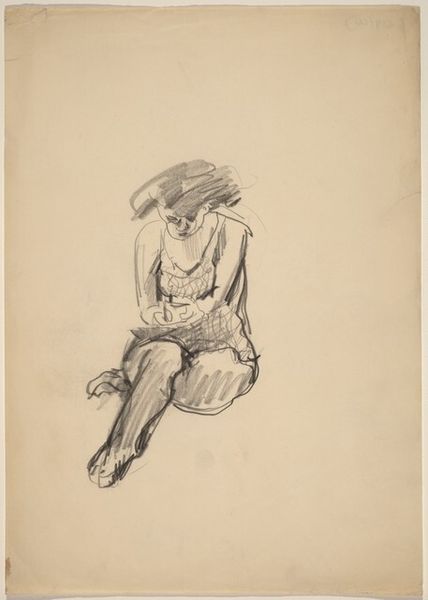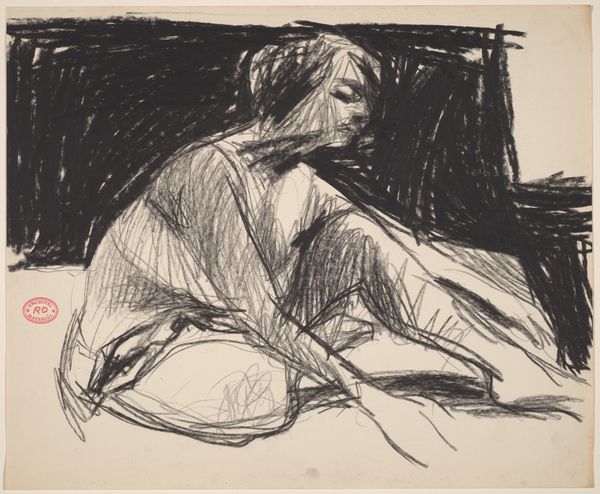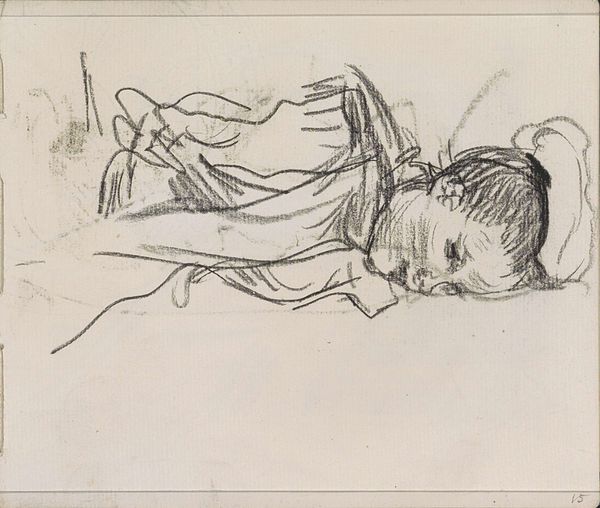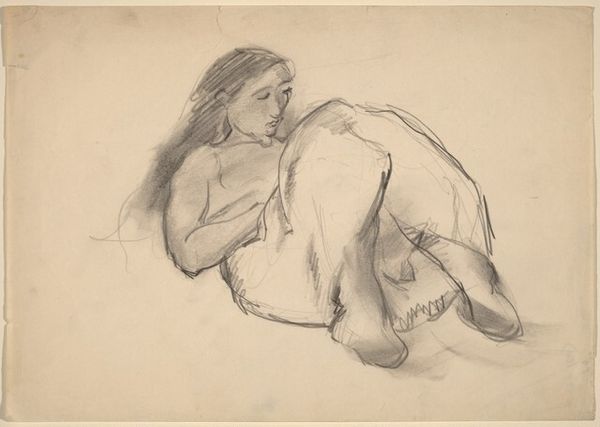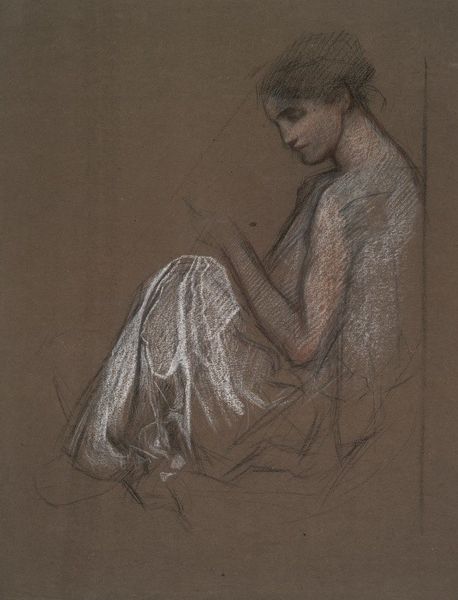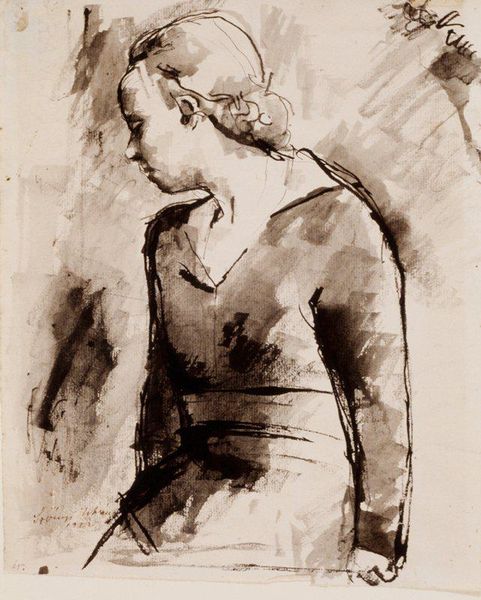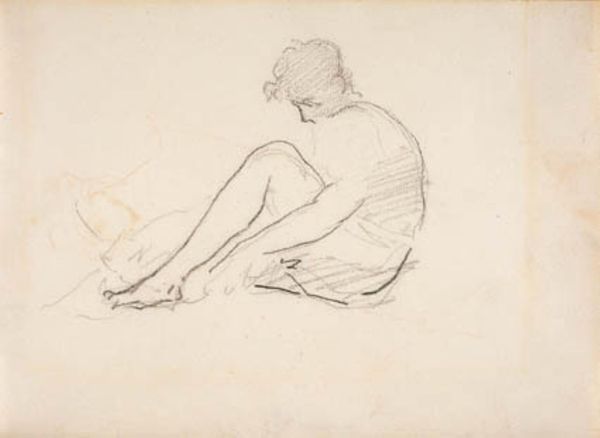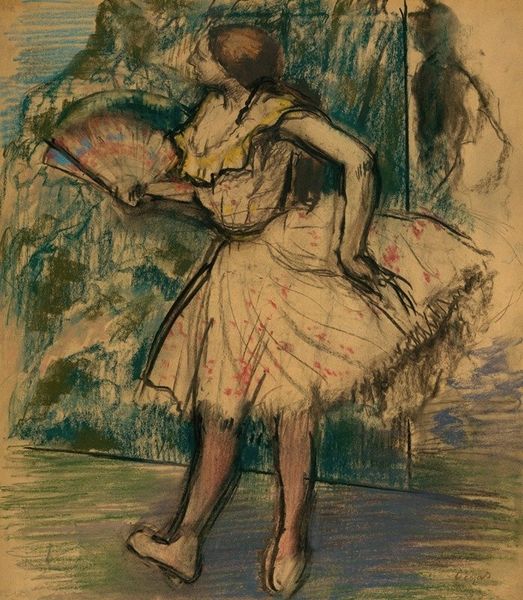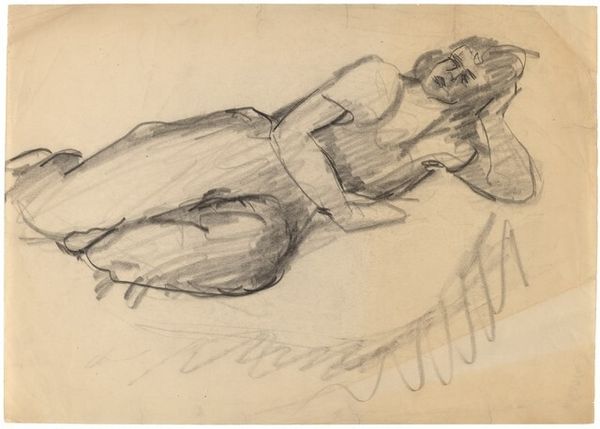
drawing, pencil, pastel
#
portrait
#
drawing
#
figurative
#
impressionism
#
pencil sketch
#
figuration
#
intimism
#
pencil
#
portrait drawing
#
genre-painting
#
pastel
Copyright: Public Domain: Artvee
Editor: So this is "Le Repos De La Danseuse," a pencil and pastel drawing by Edgar Degas from around 1879. What strikes me is the pose, so informal and intimate, like a snapshot of a private moment. How do you interpret this work? Curator: The seeming informality is deceptive. Think of the weight the image of the ballerina carries in 19th-century culture – innocence, spectacle, even exploitation. Degas offers us a twist. Notice how her crossed arms and legs, her averted gaze, subtly dismantle the expected theatricality. Editor: I see what you mean. She’s not presenting herself. She’s contained. Curator: Exactly! It is as if she is retreating into herself. The seemingly casual sketch work – what emotions might this evoke for you, considering the image? Editor: There’s a vulnerability, even a weariness. Is Degas suggesting a critique of the ballet world itself? Curator: Perhaps. Or a commentary on the objectification inherent in viewing the dancer only on stage. By showing her in repose, drained, he challenges our gaze. The very act of rest becomes a symbol of resistance to the spectacle. Editor: So the title itself, "The Dancer's Rest," takes on a whole new layer of meaning. Curator: Indeed. What appears to be a simple depiction is loaded with commentary. Editor: I hadn't considered the symbolic weight of "rest" itself. It's a powerful subversion of expectations. Thanks, that’s really enlightening. Curator: My pleasure. Images always contain layers. Exploring them is half the fun.
Comments
No comments
Be the first to comment and join the conversation on the ultimate creative platform.
